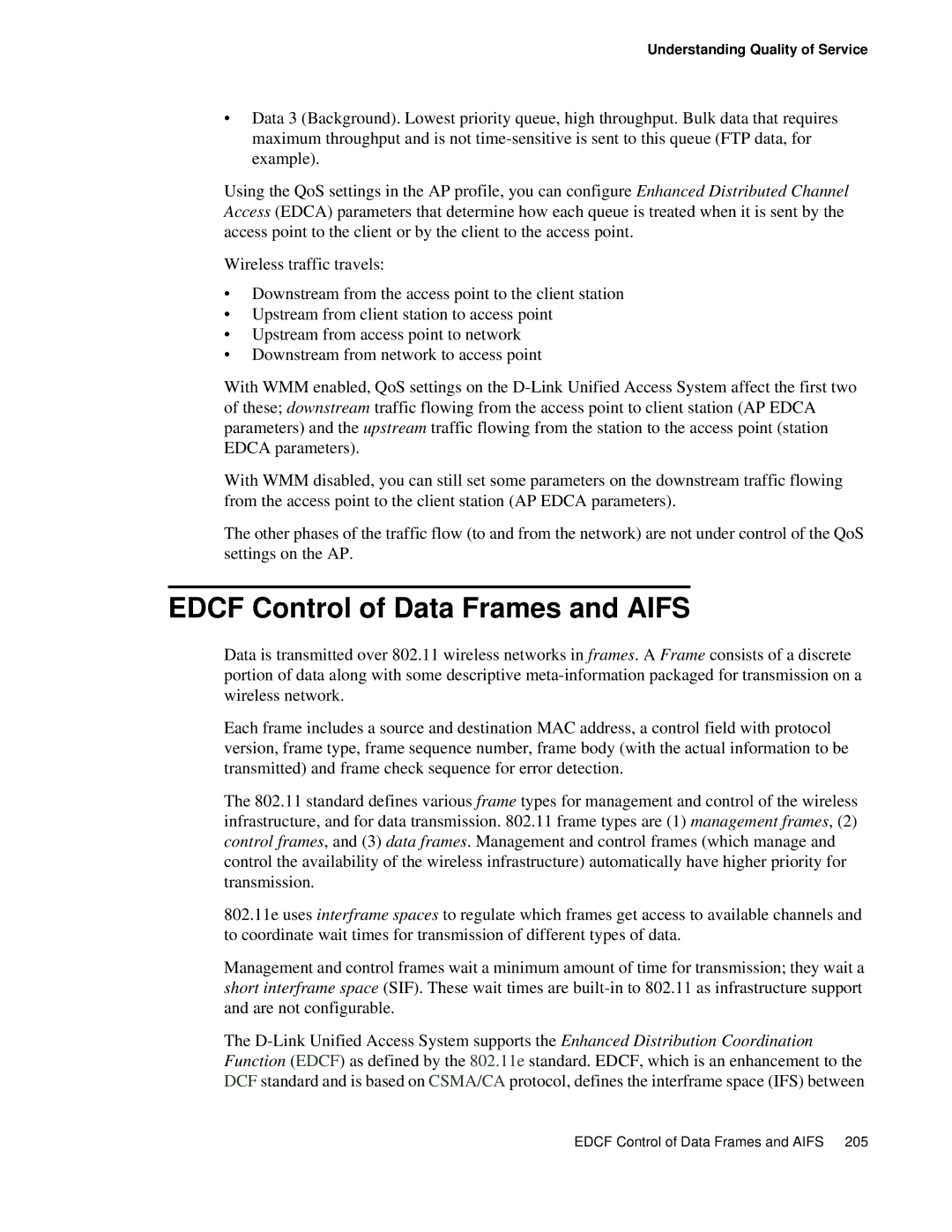Understanding Quality of Service
•Data 3 (Background). Lowest priority queue, high throughput. Bulk data that requires maximum throughput and is not
Using the QoS settings in the AP profile, you can configure Enhanced Distributed Channel Access (EDCA) parameters that determine how each queue is treated when it is sent by the access point to the client or by the client to the access point.
Wireless traffic travels:
•Downstream from the access point to the client station
•Upstream from client station to access point
•Upstream from access point to network
•Downstream from network to access point
With WMM enabled, QoS settings on the
With WMM disabled, you can still set some parameters on the downstream traffic flowing from the access point to the client station (AP EDCA parameters).
The other phases of the traffic flow (to and from the network) are not under control of the QoS settings on the AP.
EDCF Control of Data Frames and AIFS
Data is transmitted over 802.11 wireless networks in frames. A Frame consists of a discrete portion of data along with some descriptive
Each frame includes a source and destination MAC address, a control field with protocol version, frame type, frame sequence number, frame body (with the actual information to be transmitted) and frame check sequence for error detection.
The 802.11 standard defines various frame types for management and control of the wireless infrastructure, and for data transmission. 802.11 frame types are (1) management frames, (2) control frames, and (3) data frames. Management and control frames (which manage and control the availability of the wireless infrastructure) automatically have higher priority for transmission.
802.11e uses interframe spaces to regulate which frames get access to available channels and to coordinate wait times for transmission of different types of data.
Management and control frames wait a minimum amount of time for transmission; they wait a short interframe space (SIF). These wait times are
The
EDCF Control of Data Frames and AIFS 205
